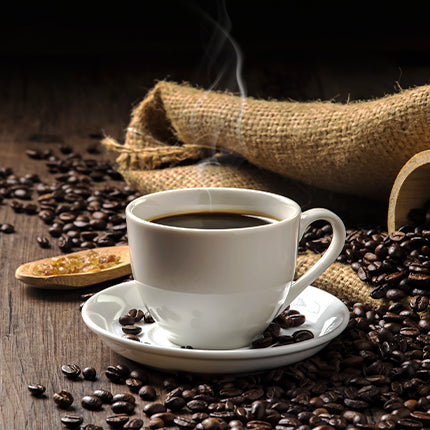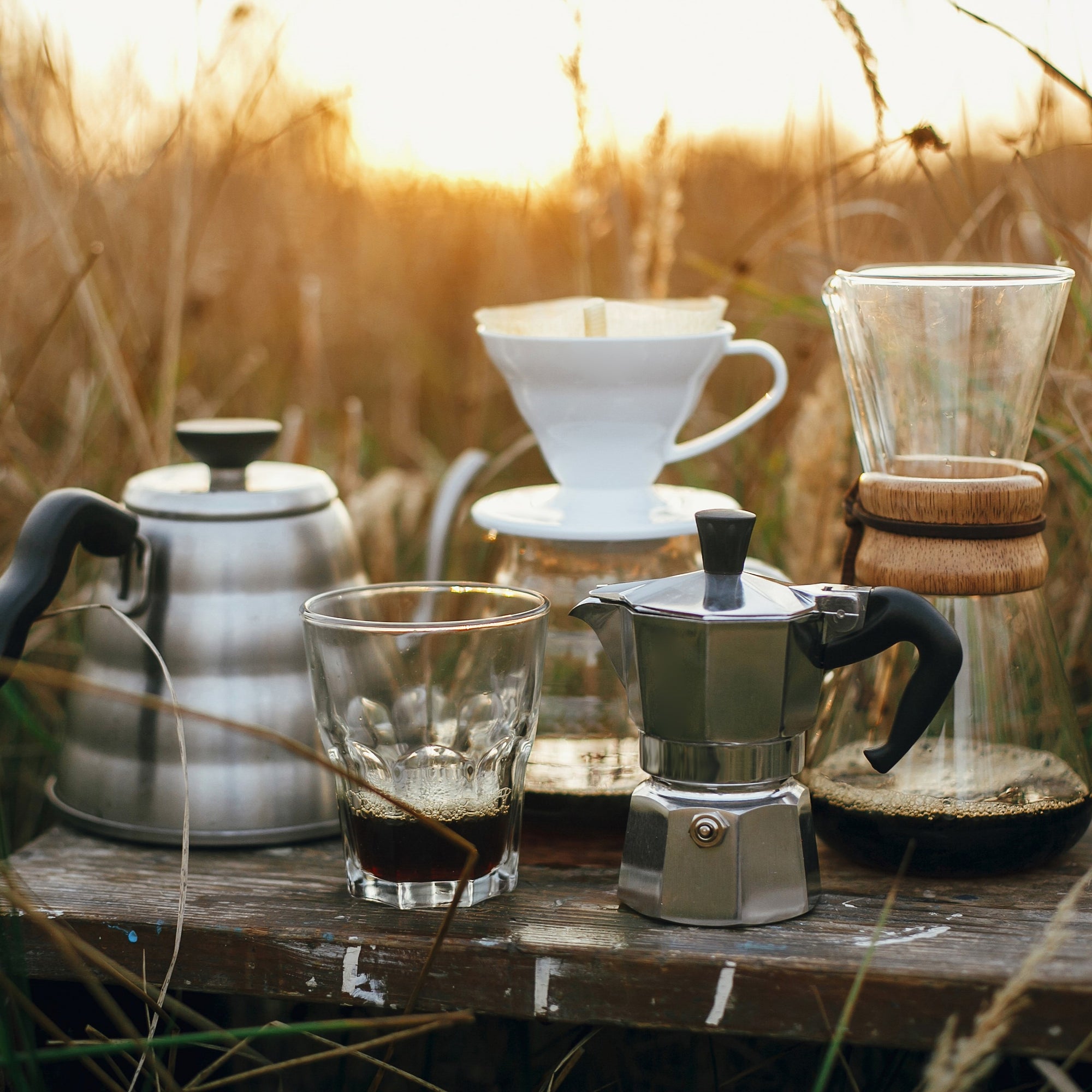The Scientific Research Behind Coffee Developing: Exactly How Temperature and Time Affect Your Beverage
Understanding the science behind coffee brewing reveals that temperature level and time are not mere variables but critical aspects that determine the drink's taste account and total top quality. The ideal brewing temperature usually falls in between 195 ° F and 205 ° F, while the period of removal varies substantially throughout various approaches. This interplay of factors can lead to a cup that is either delightful or frustrating. As we discover the subtleties of these aspects, the concern arises: exactly how can one properly equilibrium temperature and time to accomplish that ideal mixture?
The Chemistry of Coffee Removal
The chemistry of coffee extraction explores the elaborate processes that change raw coffee beans right into the fragrant beverage taken pleasure in worldwide. This improvement mainly includes the solubility of different substances present in the beans, which are affected by variables such as work dimension, water top quality, and the brewing technique employed.
Throughout the developing procedure, hot water works as a solvent, removing soluble compounds, consisting of high levels of caffeine, sugars, acids, and lipids, from the coffee grounds. Each compound adds to the taste account, fragrance, and body of the last drink. Acids are responsible for tangy and intense notes, while oils add to a rich mouthfeel.
The initial phases of brewing essence acids and sugars, leading to a pleasurable level of acidity, while prolonged removal can lead to bitterness due to over-extraction of unwanted substances. Recognizing these chemical interactions is essential for optimizing brewing strategies, as the balance in between extraction time and water temperature can significantly affect the overall high quality of the coffee.
Suitable Brewing Temperatures
Discovering the appropriate brewing temperature is crucial for unlocking the full possibility of coffee tastes and scents - coffee brewing methods. Research study shows that the optimum array for developing coffee lies between 195 ° F to 205 ° F(90 ° C to 96 ° C) Within this range, the extraction process successfully liquifies the desirable soluble substances in coffee beans, resulting in a well balanced and tasty cup
Brewing at lower temperatures, such as below 195 ° F(90 ° C ), may result in under-extraction, generating an acidic and weak brew with low-key flavors. Alternatively, brewing at temperature levels surpassing 205 ° F(96 ° C) can lead to over-extraction, generating a bitter and rough preference due to the extreme dissolution of undesirable substances, such as tannins.
Furthermore, the ideal brewing temperature level can vary depending upon the coffee bean type and roast degree. As an example, lighter roasts typically take advantage of slightly higher temperatures to improve their intricate flavor profiles, while darker roasts might be much better matched to lower temperature levels to mitigate resentment.
Eventually, keeping accuracy in developing temperature levels is important for accomplishing an unified equilibrium of tastes, making certain that every mug of coffee provides an enjoyable sensory experience.
Influence of Developing Time
Developing time plays a critical function in identifying the taste account and general quality of coffee. Much shorter developing times can result in under-extraction, leading to a weak or sour flavor, as not adequate soluble substances are dissolved.
Optimum brewing time varies depending on the approach utilized and the grind dimension of the coffee. For instance, a French press normally requires concerning four mins, while espresso removal is generally finished within 25 to 30 seconds. It is necessary to adjust developing time in conjunction with various other variables, such as water temperature and coffee-to-water proportion, to achieve the preferred flavor account.
Understanding the effect of developing time allows coffee fanatics to improve their brewing techniques, eventually enhancing the sensory experience of their cup (coffee brewing methods). With mindful interest to this variable, one can open the full possibility of the coffee, revealing its special characteristics and subtleties
Brewing Techniques and Their Results

As an example, techniques like French press and chilly mixture permit for a much longer steeping time, causing a fuller body and durable taste due to enhanced extraction of oils and soluble solids. Alternatively, you can try these out coffee developing uses high pressure and a much shorter removal time, generating a focused shot that stresses extreme flavors and an abundant crema.
Pour-over strategies, such as Chemex or V60, use an even more regulated extraction process, enabling the maker to control flow rate and water distribution, which can enhance illumination and quality. Percolation techniques cycle water through the coffee premises numerous times, leading to a more powerful, typically bitter taste.
Lastly, using paper filters versus metal filters can likewise impact the last preference; paper filters generally generate a cleaner cup by trapping oils and great bits, while metal filters enable even more oils to go through, adding to a fuller mouthfeel - coffee brewing methods. Recognizing these subtleties can elevate the coffee experience significantly
Tips for Improving Your Brew
A well-executed mixture can transform even the most basic coffee into an exceptional experience. Grind the beans just prior to making to take full advantage of freshness, making certain the grind dimension matches your developing method-- coarser for French press and finer for coffee.
Water quality plays a vital function; usage filtered water devoid of impurities. The suitable brewing temperature varies in between 195 ° F and 205 ° F(90 ° C to 96 ° C ) Too hot can blister the coffee, while too amazing might under-extract flavors.
Timing is just as essential. For immersion techniques, soaking for three to five minutes is optimum, whereas drip methods usually take about 5 mins. Explore mixture times to find your preferred stamina.

Verdict
In recap, the complex relationship between temperature and time is critical in the coffee brewing process. Complying with ideal brewing temperatures between 195 ° F and 205 ° F, alongside precise timing tailored to every method, guarantees the desired flavor account is attained. Comprehending these clinical principles empowers individuals to improve their developing methods, eventually leading to a more official statement enjoyable and well balanced coffee experience. Mastery of these factors is important for any kind of coffee fanatic seeking excellence in their drink.
Comprehending the science behind coffee developing reveals that temperature level and time are not simple variables but crucial components that dictate the drink's flavor account and general top quality. Comprehending these chemical communications is essential for enhancing brewing strategies, as the balance in between extraction time and water temperature level can dramatically influence the total high quality of the coffee.Developing time plays a critical duty in figuring out the taste profile and total quality of coffee. By concentrating on these components-- bean quality, grind dimension, water temperature, soaking time, and proportion-- you can elevate your coffee developing procedure, resulting in a regularly remarkable cup.
In recap, the intricate connection in between browse around this site temperature level and time is critical in the coffee developing process.
Comments on “Coffee Brewing Methods: Opening the Keys to the Perfect Mug in your home”